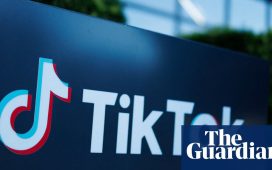If ever there was a white paradise, it was Silicon Valley in the 1980s. We called them geniuses and wizards. Inventors and entrepreneurs. Industry titans, and even a few free-thinking hippies who believed they were gods, powerful enough to shape technology to their will.
This white cast of characters populated the world’s largest high tech hub at a rate of nearly 75%. Absorbed 80% of the area’s generated income. Owned the vast majority of its homes. Commanded double the per capita income of black people living in the area.
And they needed endless fuel to power their high tech dreams.
Cocaine was tailor-made to fit the valley’s technological and entrepreneurial ethos – endless workdays, relentless competition, the obsessive need to innovate. The drug traded hands as quickly as the latest packet-switching technology. IBM, Lockheed, Syntex, Hewlett-Packard – the “white lady” was passed around the iconic tech companies of the time by bathroom attendants, shoe shine boys, mailroom clerks and sometimes even a stranger with a pager from off the street. In broad daylight they distributed so much cocaine – DEA agents in the Valley seized 374 pounds of cocaine in 1986 and 1,000 pounds the following year – that insurance companies raised the premiums of high-tech workers in order to cover the additional health risks.
But that was only one part of the story of cocaine in Silicon Valley in the mid 1980s. In the same period, the Valley became the hub of an international cocaine trafficking network that shaped American society in profound ways. And at the heart of the almost unbelievable and largely forgotten history of that network is the deeply troubling intersection between technology, race and racism – a phenomenon I refer to in my scholarship as Black Software.
The Silicon Valley trafficking network was run by three unlikely accomplices – a drug kingpin, a freedom fighter, and a ghetto tennis player turned hustler. From his Bay Area base, the kingpin, Norwin Meneses, was the primary supplier of cocaine in the South, West and Midwest United States. One of the dealers who procured their drugs from Meneses was a freedom fighter named Danilo Blandon, who sent his cocaine profits to the Contras, a Nicaraguan guerilla Army fighting to overthrow the Sandinista government. The drugs themselves Blandon sent south from Silicon Valley to Los Angeles, courtesy of the hustler “Freeway” Rick Ross.
Before the Valley’s cocaine reached its destination – the black and impoverished-by-design neighborhoods of south-central Los Angeles – Ross transformed it. By altering its chemical structure using baking soda and water, a process he learned in the streets of Oakland, the Valley’s pure, powder-white, high-dollar-for-a-high-lifestyle cocaine became crack.
•••
Cocaine, like software, is a technology. We process coca leaves to make cocaine, cocaine to make crack, and numbers to make software – all to meet human needs and desires.
Technologies – whether cocaine or software – become white or black by association. Cocaine was considered a white drug, and chemically pure. White people used and had access to it because they could afford to pay for it, or had the cultural capital to associate with those who did.
Crack was considered a black drug. It was dark, dirty, and priced to sell to black people who needed a high they could afford. It was sold in places where black users congregated, like segregated slums and abandoned homes.
Cocaine maintained its purity, price, and associated lifestyle because, and at the expense of, crack and its users. Society considered cocaine addicts as sick and suffering from a disease. It saw black users as dangerous and criminal. The US legal system followed suit: just 5g of crack guaranteed a black man five years in jail; a white woman would have to get caught with 500g of powder cocaine to get the same sentence.
When crack hit south-central, violence erupted. Murders, robberies, assaults and property crimes skyrocketed, increasing up to five times after 1985. That is when cocaine began to signal danger, and white people’s perpetual fear of blackness and black people kicked into fifth gear. And that is what triggered America’s associated computing machinery.
The DEA designed an automated computer system they called Great: the Gang Reporting Evaluation and Tracking system. The system identified and tracked supposed gang members who were allegedly distributing crack cocaine. Aided by a DEA profile – suspect is young, black, male, with close-cropped hair or jeri curl, wearing gold chains or rings, or blue or red, clothing – the Great dragnet pulled nearly 50% of south-central’s black population into its database, effectively criminalizing and helping to immiserate an entire community.
Great was the product of a long history of such computer systems. To white technologists, black people have always been a problem that invited computational solutions. In Jamaica in the 1920s, South Africa in the 1950s, and the US in the 1960s. That was when President Lyndon Johnson assembled a task force to design computer software that would help to solve the nation’s “crime problem”. This was a problem that the government and white society explicitly and implicitly defined as part and parcel of America’s “Negro problem”. Concentrated in the country’s urban centers, it threatened to infect the whole of white America.
So computer scientists in government, education and private industry conspired to build what came to be called “criminal justice information systems” – crime databases connected across state and federal law enforcement agencies that could help cops profile and target black people and other populations deemed criminal. By the 1980s, more than 1,100 such systems had proliferated throughout the US.
What the Great system did to help destroy the black community in south-central was shocking enough, but ten years later came an even more incredible revelation. On 18 August 1996, the San Jose Mercury News broke a story that the CIA and DEA had facilitated the flow of cocaine from Silicon Valley to Los Angeles and then covered up its role for a decade.
The revelations generated outrage in the black community. But they also caused something unusual to happen in the relationship between technology and blackness. Providing the evidence for the allegations was such an elaborate undertaking that the newspaper uploaded it all onto its very own website, called the Dark Alliance, which told the story through text, visual images, sound recordings, and hyperlinks to government documents and other primary sources. The Dark Alliance website brought legions of black internet users online – many of them for the first time – and helped to politicize them. Unlike the Great database and other digital tools used to police black people, Dark Alliance showed that information technologies could inform and empower.
•••
That is a small part of the backstory that drew cocaine into the nexus of race, technology and blackness. But it’s also why cocaine became the perfect analogy to think through the relationship between technology and race. Cocaine isn’t just a racialized technology; technologies are racialized in the same way as powder and crack cocaine.
Because blacks have historically been excluded from the companies that create computing technology, and from access to it, we are framed differently than whites with respect to what animates all technologies – the problems they are designed to solve. While white people problems exist, white people, per se, have never been defined as “a” or “the” problem from the standpoint of computing technology.
When the nation and the world perpetually identifies, frames and targets black people as “problems”, then one can clearly see how new technologies – inadvertently or purposefully – become trained on, and threaten to destroy, black lives. This has been the case with crack cocaine for decades – and it’s now true for facial recognition technology, algorithmically-driven criminal risk assessment tools, DNA dragnets, and other tools designed to surveil, profile, and control people.
This is the essence of what I call Black Software. To think through these racialized technologies we need to admit that, at least metaphorically, Silicon Valley still has a cocaine problem.
Charlton D McIlwain is Professor of Media, Culture and Communication at NYU, Founder of the Center for Critical Race & Digital Studies, and the author of Black Software (Oxford 2019).








